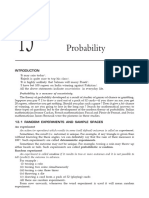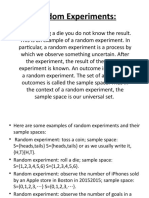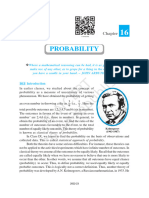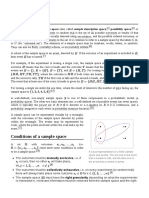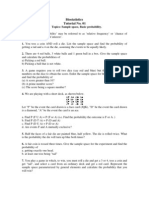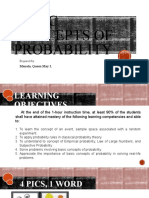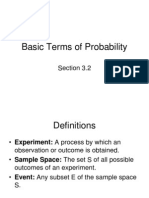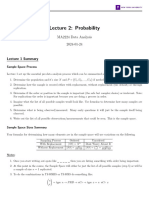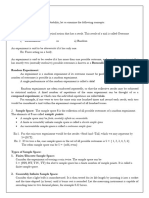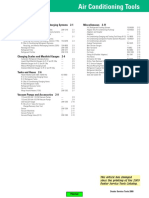0% found this document useful (0 votes)
10 views3 pagesSample Space
The document explains the concept of sample space in probability, defining it as the set of all possible outcomes of an experiment. It provides examples of various experiments, including tossing a dime, spinning a spinner, rolling a die, and selecting a marble from a jar, along with their respective probabilities. It concludes by stating that the sum of the probabilities of all distinct outcomes in a sample space equals 1.
Uploaded by
mehmoodahmed8855372Copyright
© © All Rights Reserved
We take content rights seriously. If you suspect this is your content, claim it here.
Available Formats
Download as DOCX, PDF, TXT or read online on Scribd
0% found this document useful (0 votes)
10 views3 pagesSample Space
The document explains the concept of sample space in probability, defining it as the set of all possible outcomes of an experiment. It provides examples of various experiments, including tossing a dime, spinning a spinner, rolling a die, and selecting a marble from a jar, along with their respective probabilities. It concludes by stating that the sum of the probabilities of all distinct outcomes in a sample space equals 1.
Uploaded by
mehmoodahmed8855372Copyright
© © All Rights Reserved
We take content rights seriously. If you suspect this is your content, claim it here.
Available Formats
Download as DOCX, PDF, TXT or read online on Scribd
/ 3











